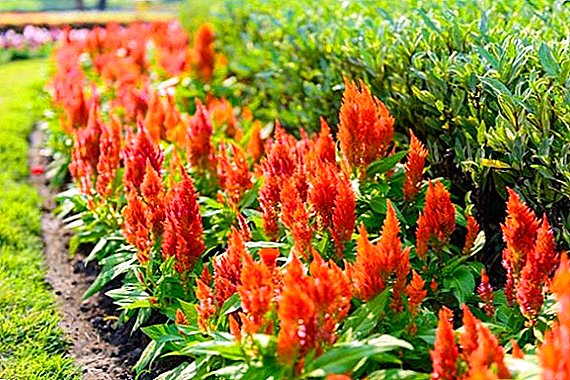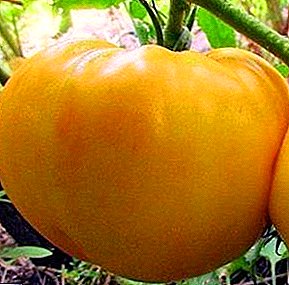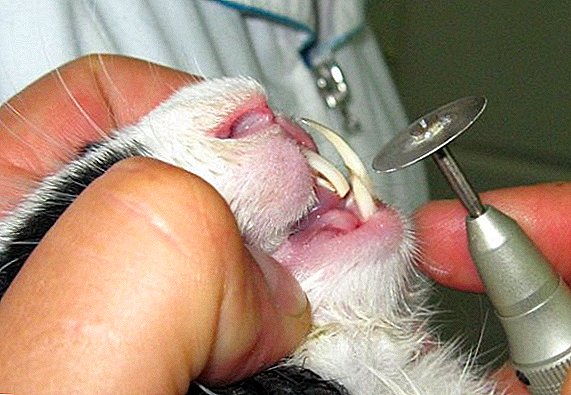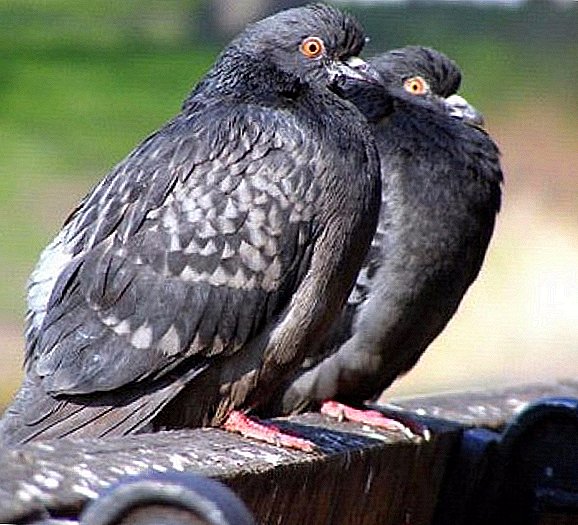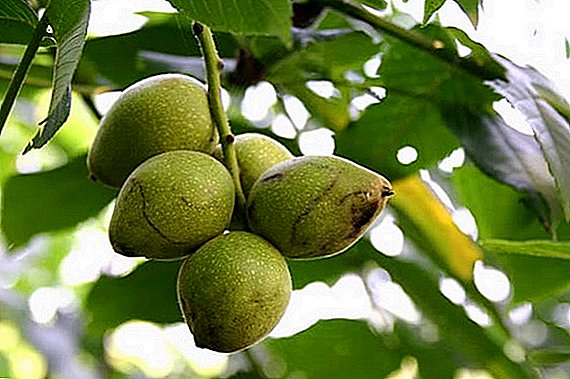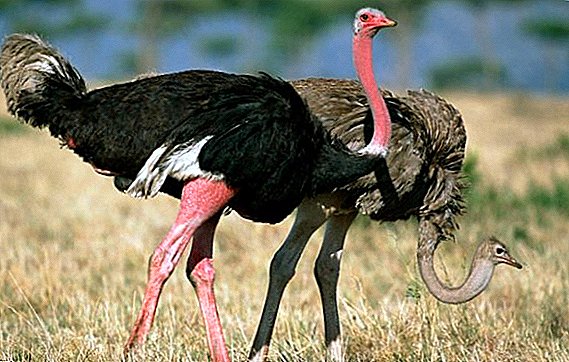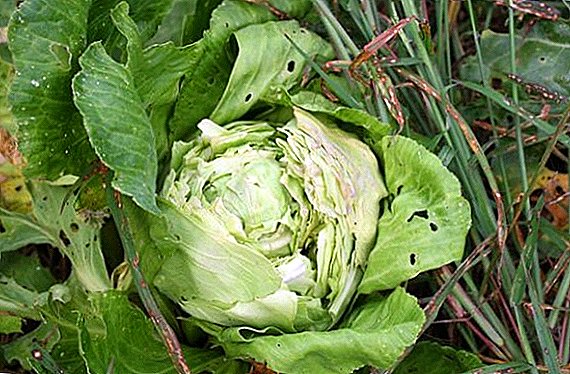 Cabbage pests, there are a lot, and the fight against them is not always successful. To the enemies are babanuha, Delia radicum, wavy Flea cabbage white butterfly, diamondback moth, cabbage moth, cabbage looper, cabbage aphid, cabbage bug, cabbage root skrytnohobotnik, common cricket, Ogorodnaya scoop, slugs, dark chuck, and others. Every year, these pests can give people who have their own gardens a lot of problems. But still you should not hurry with the persecution of chemical means. There are also traditional methods by which you can process plants. On how the processing of cabbage from pests, and ways to combat pests will be discussed further.
Cabbage pests, there are a lot, and the fight against them is not always successful. To the enemies are babanuha, Delia radicum, wavy Flea cabbage white butterfly, diamondback moth, cabbage moth, cabbage looper, cabbage aphid, cabbage bug, cabbage root skrytnohobotnik, common cricket, Ogorodnaya scoop, slugs, dark chuck, and others. Every year, these pests can give people who have their own gardens a lot of problems. But still you should not hurry with the persecution of chemical means. There are also traditional methods by which you can process plants. On how the processing of cabbage from pests, and ways to combat pests will be discussed further.
Did you know?The Greeks believed that cabbage will help relieve alcohol intoxication and return you to a state of sobriety of mind.
Babanuha
 Babanukha or cabbage leaf beetle is a black beetle with a green shimmer and brownish paws. The leaf beetle can damage many plant varieties, including cabbage. It winters mainly in the soil, under the remaining remains of plants, in lumps of manure, as well as in other secluded places of the garden area. In early June, this beetle leaves the wintering place and begins to eat cabbage leaves. Females can gnaw whole holes in these leaves, where they begin to lay their eggs.
Babanukha or cabbage leaf beetle is a black beetle with a green shimmer and brownish paws. The leaf beetle can damage many plant varieties, including cabbage. It winters mainly in the soil, under the remaining remains of plants, in lumps of manure, as well as in other secluded places of the garden area. In early June, this beetle leaves the wintering place and begins to eat cabbage leaves. Females can gnaw whole holes in these leaves, where they begin to lay their eggs.
Among the measures of protection from babanuhi, the following should be noted:
- carefully remove all plant residues after harvest;
- conduct weed control;
- remove wild radish and mustard;
- plant seedlings in the early period;
- in the autumn to dig up the soil in the bed with seedlings.
Spring Cabbage Fly
 This pest is a small gray fly with translucent wings (Fig. 2). The body length of the fly reaches 6 mm. The spring fly larva reaches a length of 8 mm. By color - white. These same larvae can damage not only cabbage, but also radishes, turnips, rutabaga.
This pest is a small gray fly with translucent wings (Fig. 2). The body length of the fly reaches 6 mm. The spring fly larva reaches a length of 8 mm. By color - white. These same larvae can damage not only cabbage, but also radishes, turnips, rutabaga.
Pupae flies prefer to winter in the soil. Females can lay their eggs directly in place near the stem of the plant. After a week, the larvae begin to appear. They begin to make their way to the root of the plant and devour it, thus completely damaging the roots. Also, this pest makes a move in the stalk of cabbage.
How to deal with a cabbage fly:
- sprinkle cabbage with burdock tincture (pour 2 kg of chopped burdock leaves with 10 liters of warm but not hot water, then let it brew for about two days and strain);
Important! Before you sprinkle cabbage from spring flies, you need to remember to get rid of all weeds and plant residues from the bed in time.
- when autumn comes, it is imperative to dig the soil;
- be sure to do hilling culture, since such actions contribute to the growth of additional roots.
Wavy flea
The flea cabbage is a black beetle with a golden stripe on each wing. The length of the flea reaches up to 3 mm. The larva of a bug has three pairs of legs, a yellowish color and a dark head. The length can be up to 5 mm.
 Wavy flea very similar to the usual black flea. The difference is in color and habitat (wet environment).
Wavy flea very similar to the usual black flea. The difference is in color and habitat (wet environment).
In the spring, the beetle begins to emerge from the soil where it has wintered, and settle on wild cabbage. The female lays the eggs directly on top of the soil. For ten days, the larvae form and on the eleventh appear, starting to feed on small roots of cabbage. After 20 days, the larvae turn into pupae, and after 15 days, new wavy fleas appear. Beetles begin to eat away cabbage, leaving holes on its leaves round. The peel of the plant remains completely intact.
How to deal with flea:
- you should make a decoction of tansy (pour 800 g of dried or 3 kg of fresh tansy and pour 10 liters of water, then boil everything for 45 minutes; cool the broth and insist for 2 hours, then strain);
- sprinkle cabbage broth in the evening 2 times a week.
Did you know?This method of dealing with flea should be stopped 2 weeks before the main harvest.
Cabbage Whitefish
A white butterfly lays eggs on the underside of cabbage leaves.
 Then caterpillars appear and begin to feed on the leaves, and then crawl along the nearby cultures. Many leaves do not remain intact after the "raid" of caterpillars, as they simply eat them. On the plant itself after that you can only see the veins. Whitefish in the soil itself begins to slow down the culture in growth, and it stops growing. If the cabbage is badly affected, then the cabbages are not tied to it.
Then caterpillars appear and begin to feed on the leaves, and then crawl along the nearby cultures. Many leaves do not remain intact after the "raid" of caterpillars, as they simply eat them. On the plant itself after that you can only see the veins. Whitefish in the soil itself begins to slow down the culture in growth, and it stops growing. If the cabbage is badly affected, then the cabbages are not tied to it.
How to deal with such cabbage pests:
- you can try to attract parasites and predators (the so-called entomophages) by planting dill and carrot around the garden with cabbage;
- if we are talking about open ground, then throughout the entire period of growth the plant should be inspected and prevented the spread of eggs and larvae;
- process the cabbage tincture of wormwood, which will immediately save you from this parasite.
Cabbage Mole
The cabbage mole is a butterfly whose wingspan can reach up to 1 cm.
 The front wings have a brownish tint, along which there is a strip of dark color. The back wings of the butterfly are narrowish, dark gray in color. The caterpillar of such a cabbage moth can reach a length of up to 1 cm. The caterpillar has a greenish color and eight pairs of legs.
The front wings have a brownish tint, along which there is a strip of dark color. The back wings of the butterfly are narrowish, dark gray in color. The caterpillar of such a cabbage moth can reach a length of up to 1 cm. The caterpillar has a greenish color and eight pairs of legs.
The butterfly usually flies out at the end of spring and lays its eggs along the veins below the cabbage leaf. After a week, you may notice the appearance of caterpillars that begin to eed into the leaves and damage their skin. In the pulp of leaves appear noticeable moves. After that, the caterpillar can damage the internal leaves and the emerging cabbage cabbage, as well as the tip.
Cabbage pest treatment:
- It is recommended to conduct foliar feeding with a special agent that contains potassium chloride (superphosphate);
- You can try to remove all the remnants of plants that remained after harvest;
- weed the beds and remove all the cruciferous weeds.
Cabbage Mace
Cabbage fire is a butterfly whose wings reach 4 cm.
 This pest has dark front strips with brown stripes. The rear wings are light brown in color. The insect prefers to spend the winter period in the soil, and then at the beginning of summer a butterfly appears. The female lays eggs from below, on the surface of the leaf. After 11 days, the caterpillars hatch from the eggs and begin to eat away the flesh of the leaf, gnawing at it and making round holes. Great damage can be seen from the inside of the sheet. The caterpillars begin to pupate in a month.
This pest has dark front strips with brown stripes. The rear wings are light brown in color. The insect prefers to spend the winter period in the soil, and then at the beginning of summer a butterfly appears. The female lays eggs from below, on the surface of the leaf. After 11 days, the caterpillars hatch from the eggs and begin to eat away the flesh of the leaf, gnawing at it and making round holes. Great damage can be seen from the inside of the sheet. The caterpillars begin to pupate in a month.
Fighting such cabbage pests:
- destroy all weeds;
- try to catch all the butterflies with the help of lightwave;
- dig up the soil in the garden;
- try to plant cabbage in the early stages before butterflies begin to appear.
Cabbage scoop
 This pest is a butterfly whose wings can reach up to 5 cm.
This pest is a butterfly whose wings can reach up to 5 cm.
Front wings brown shade with a light transverse band. The rear wings have a light brown color. Caterpillar scoops of green color, may also have yellowish stripes on the sides of the body.
To combat the scoop on cabbage is recommended:
- Spray from the broth pepper bitter varieties. Take 1 kg of fresh pepper (or 0.5 dry red), then pour boiling water. Broth should be infused for an hour. It is then bottled in plastic containers and stored in a cool, dark place. Also, before you begin spraying, you should add 40 g of soap to 250 ml of broth. Spraying interval - 15 days;
- A solution of white mustard powder will also help in the fight against these pests. Preparation: in 1 liter of water add 12 g of powder, mix, strain. Before spraying cabbage, bring 200 ml of the solution to a volume of 1 l;
- You can also try catching butterflies with light;
- In the autumn, do not forget to dig / weed your beds / gardens;
- In the summer, destroy all weeds;
- Plant the cabbage in the early period before the appearance of the pest.
Cabbage Aphid
 Cabbage aphid is a greenish insect. Aphid attacks young plant. On cabbage, you can notice the appearance of black dots that fold the leaves.
Cabbage aphid is a greenish insect. Aphid attacks young plant. On cabbage, you can notice the appearance of black dots that fold the leaves.
Important!If the aphids are not destroyed, the plant may die.Fighting aphids on cabbage:
- Spray tincture of tomato tops;
- Treat the cabbage with soap and water and after a week do not forget to repeat the procedure;
- Spray the plant tincture against aphids (ash, tobacco dust, mustard spoon, a spoon of liquid soap - all this pour 10 liters of boiling water. Let it stand for a day, drain).
Cabbage bug
 The pest is an insect that hibernates under fallen autumn leaves and plant debris.
The pest is an insect that hibernates under fallen autumn leaves and plant debris.
At the beginning of summer the bug comes out, and the females begin to lay eggs on leaves, pods, and stalks of plants. The cabbage, which is damaged by the bug, turns yellow, and characteristic spots are formed on it. Young shoots of cabbage die. Can also fall ovary.
Did you know? If you plant a wormwood next to the cabbage, it can protect the crop from the bug.Fighting cabbage bug:
- It is recommended to sprinkle the plant with wormwood broth (pour 3 kg of already chopped wormwood with cold water and boil for half an hour);
- it is also necessary to plant seedlings in time before the appearance of the bug;
- get rid of weeds and plant debris.
Cabbage Root
 Cabbage root is a dark gray beetle.
Cabbage root is a dark gray beetle.
The trunk reaches a length of 3 mm. The larvae are usually white and curved in the shape of a shoe. Hibernation occurs in the leaves of the forest. Females start laying eggs in cabbage stalks, making holes in it. The larva feeds on the flesh of the stem, slowly starting to move to the roots. At the root, bloating appears (or the so-called gall). One cabbage can be a carrier of 30 gal, where the larvae grows. Then the larvae go into the ground, where the transformation into a pupa begins.
Did you know? Many doctors say that cabbage may contain substances that are able to fight off the onset of cancer.
Methods of pest control:
- remove weeds;
- inspect the roots and initially reject the plant with a growth.
Common bear
 The common bear can reach a length of 7 cm. The insect has a rigid body with a soft belly and wings, strong jaws without a mustache and strongly developed legs, which are adapted for digging passages in the ground. Medvedka reaches a length of 6 cm and has a rigid body with wings, strong horn jaws; Strongly developed front legs of a polar bear digging - adapted for digging underground passages in the soil.
The common bear can reach a length of 7 cm. The insect has a rigid body with a soft belly and wings, strong jaws without a mustache and strongly developed legs, which are adapted for digging passages in the ground. Medvedka reaches a length of 6 cm and has a rigid body with wings, strong horn jaws; Strongly developed front legs of a polar bear digging - adapted for digging underground passages in the soil.
Did you know? Medvedku was so named because of her clumsy, densely overgrown dark brown calf, like bears.Fighting Medvedka:
- an insecticidal drug that decomposes in the hole during the direct landing of cabbage; the hole is covered with soil;
- dig holes, where they put horse manure. Medvedka settles there to spend the winter, after which manure is thrown away.
Garden scoop
There are several methods of feeding scoops, why they are divided into 2 groups:
- gnawing scoop, which feeds only on underground plants;
- leaf-eating, which feeds on fruits and plants that are above the ground.
Important!Both species show their activity only at night.
 Winter garden scoop transfers at a depth of 20 cm, then the caterpillar rises to the surface with the onset of heat and pupates. In mid-summer, the butterfly lays eggs on the inside of a leaf of cabbage. The caterpillar gnaws the leaves and strikes the fruit.
Winter garden scoop transfers at a depth of 20 cm, then the caterpillar rises to the surface with the onset of heat and pupates. In mid-summer, the butterfly lays eggs on the inside of a leaf of cabbage. The caterpillar gnaws the leaves and strikes the fruit.Destruction methods:
- Catching butterflies in the light;
- Collecting caterpillars;
- Destruction of weeds and nettles;
- Chemical spraying.
Slugs
A slug is a night cabbage hunter.
Important! It is not necessary to bring land from other sites, since larvae of pests and weed seeds can lurk in it.How to process cabbage from slugs:
- Bait (arrange a tray with juice or beer next to the bed);
- Sprinkle mustard powder;
- Prepare a solution of ammonia and water (40 ml of alcohol per 6 liters of distilled water). Pour between cabbage. Slugs crawl because of an unbearable smell;
- Put nettle all over the bed (not only the person does not like to be burned);
- Crush and scatter egg shells;
- Tincture of bitter pepper will help you in the fight against slugs;
- Lubricate the place of the garden with green paint (1 bottle of green for the bucket).

Dark clicker
In length, this insect can reach 10 mm, and in width - 2 mm.
 The body has a dark brown color, convex shape. The wings are covered with yellowish-grayish hairs. The eggs of this insect are white in color, spherical, 1 mm in diameter. At the end of the calf there is a tip. The pupa is white in color and reaches a length of 12 mm. Nutcrack develops to 6 years. Propagated after feeding the parenchyma of the leaves of cereals. The female can lay eggs in a pile of 18 (maximum). In depth go up to 5 cm. For all the time, the female lays up to 240 eggs. Larvae, eggs, and pupae develop in the soil. Larvae can be generated up to 5 years, mainly in the wooded zone, and in the steppe zone - up to 3 years.
The body has a dark brown color, convex shape. The wings are covered with yellowish-grayish hairs. The eggs of this insect are white in color, spherical, 1 mm in diameter. At the end of the calf there is a tip. The pupa is white in color and reaches a length of 12 mm. Nutcrack develops to 6 years. Propagated after feeding the parenchyma of the leaves of cereals. The female can lay eggs in a pile of 18 (maximum). In depth go up to 5 cm. For all the time, the female lays up to 240 eggs. Larvae, eggs, and pupae develop in the soil. Larvae can be generated up to 5 years, mainly in the wooded zone, and in the steppe zone - up to 3 years.
Important! Do not try to dilute the moisture in your area, as this insect is considered to be very moisture-loving.The fight against dark click is problematic. It is carried out by the following methods:
- Tillage;
- Loosening the soil;
- Selection of beetles and larvae;
- Prevent clogging of vegetable gardens;
- Sprinkle lime, ash and chalk, thereby reducing the acidity of the soil.


